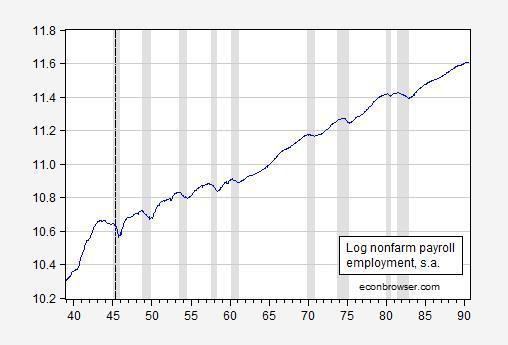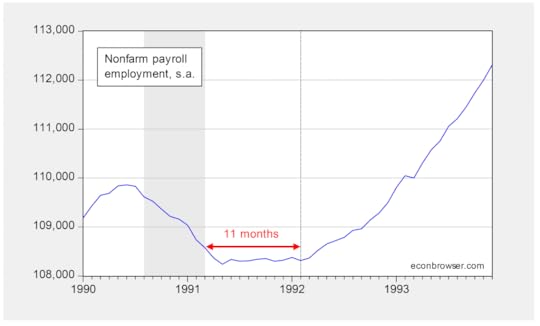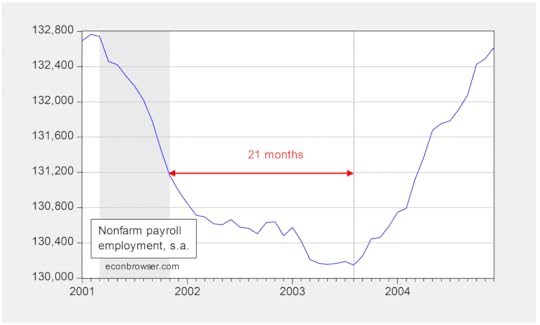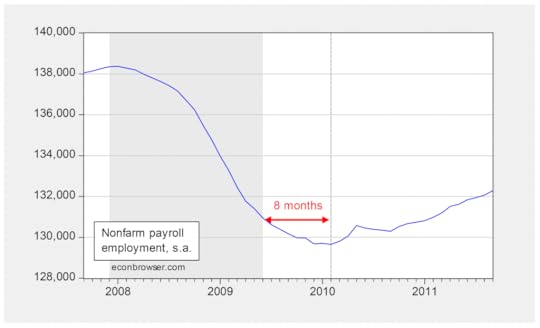More on U.S. Employment, Post-Trough
Reader rtd states “it is virtually guaranteed that after a nation’s business cycle trough, that same nation’s employment growth will display an upward trend.” I thought this an interesting enough assertion that it merited additional investigation.
If one were looking at data in the US from the beginning of the nonfarm payroll series until the 1990-91 recession, this characterization would be apt, as shown in Figure 1.
Figure 1: Log nonfarm payroll employment (blue). NBER defined recession dates shaded gray. Long dashed line at end of WWII. Source: BLS via FRED, NBER and author’s calculations.
Employment rises almost immediately after the NBER defined troughs. Inspection of the recessions since 1990-91 exhibit a much different behavior. (On a side note, notice that employment declines with end of the war, with recession ending at 1945M10.)
Now compare the behavior of nonfarm payroll employment after troughs of the last three recessions. There is a much delayed resumption of employment growth, as shown in Figures 2-4.
Figure 2: Nonfarm payroll employment, thousands, s.a., (blue). NBER defined recession dates shaded gray. Dashed line at employment trough. Red arrow indicates the 11 months between trough and increase in employment. Source: BLS and NBER.
Figure 3: Nonfarm payroll employment, thousands, s.a., (blue). NBER defined recession dates shaded gray. Dashed line at employment trough. Red arrow indicates the 21 months between trough and increase in employment. Source: BLS and NBER.
Figure 4: Nonfarm payroll employment, thousands, s.a., (blue). NBER defined recession dates shaded gray. Dashed line at employment trough. Red arrow indicates the 8 months between trough and increase in employment. Source: BLS and NBER.
On a side note, a similar delay (and smaller rebound) is apparent in Eurozone employment, as discussed in this post. In the UK, employment only exceeds the 2009Q3 level (end of the recession) in 2010Q2.
Menzie David Chinn's Blog







